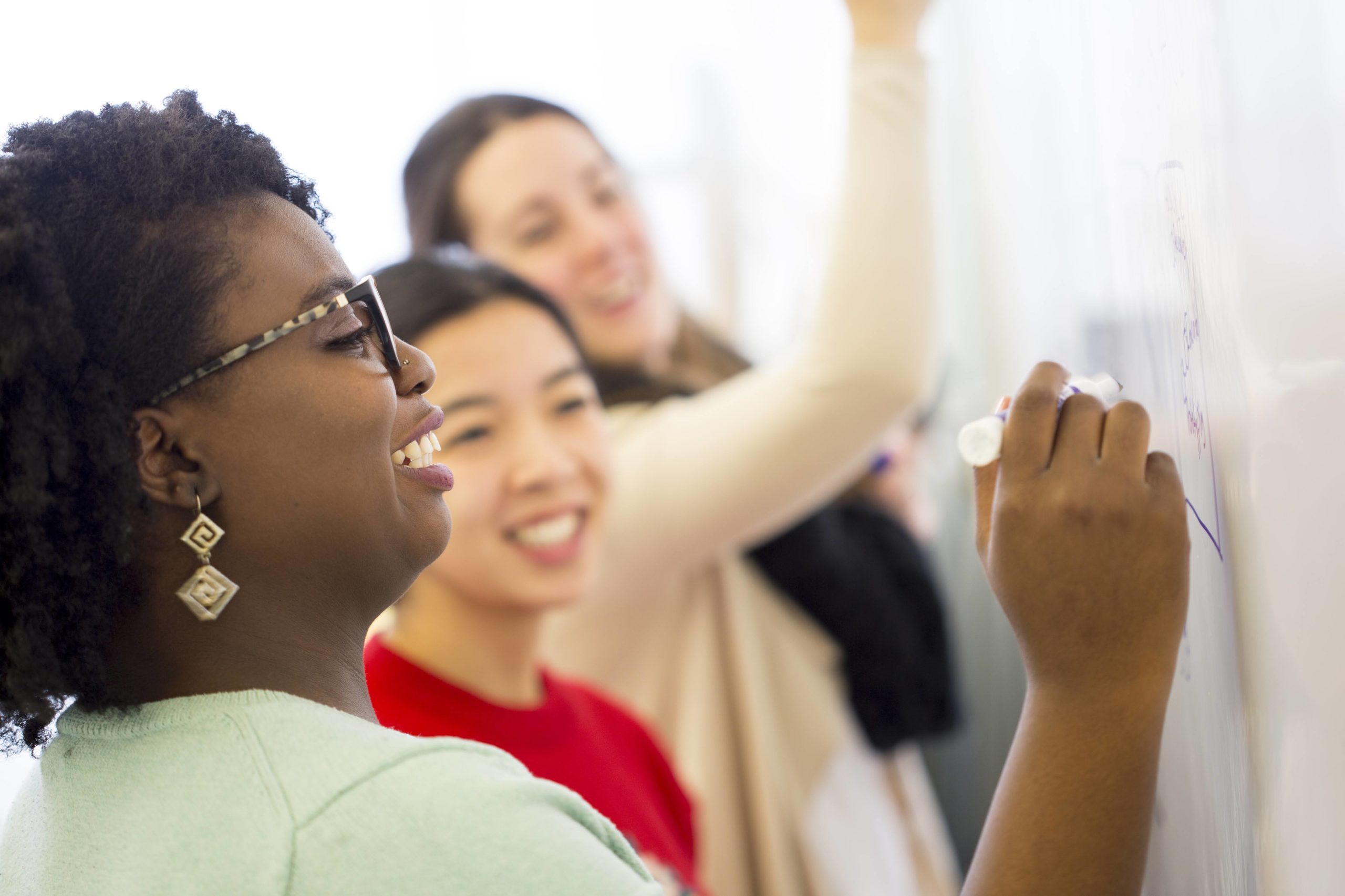
Why ILTs need a shared understanding
When we ask team members to talk about the purpose of their ILT, we frequently hear a range of answers, at times even on the same team. And we don’t always hear reference to student learning. In other words, schools don’t typically envision the full potential of an ILT, including the impact that teacher collective efficacy can have on students. (Collective efficacy is when teachers share the belief that, together, they can positively influence student learning and make an educational difference in students’ lives, regardless of student background. And it turns out that belief works—it’s shown to be a top influencer of student outcomes.)
The challenge is, without clarity of their purpose as a team and a defined shared vision between the team and the school at large, the ILT can struggle to lead building-wide change that delivers for students. We’ve seen ILTs generate welcome, quality professional development. But if the ILT’s purpose isn’t clearly defined around improving students’ learning, the team may not be routinely assessing professional development for its impact on teaching and student learning. And so, the desired outcome can remain unclear.
Other ILTs are narrowly focused on standardized test results (often as part of a required school improvement plan), missing the full picture of their students. Talking about student data is not the same as talking about students or students’ learning experiences.
We encourage ILTs to go deeper. Students tell us they want to experience happiness, pride, and belonging at school. ILT’s are positioned to foster a vision for the school and sustain routines for themselves that support better student learning experiences and outcomes.
The 3 steps for ILTs to center student experiences
To that end, we advise ILTs to take time to thoughtfully define their purpose and commitment statement in terms of students and their learning so the team can act from it and hold themselves accountable to it. We’ve outlined three steps, below, to help.
1. Reflect, write, read and revise
To move forward, the team first needs to understand its starting point. It’s critical for the principal to dedicate team time for all members to reflect on and document in writing their current picture of the ILT purpose. We then suggest readings on the power of teacher collective efficacy and anti-racist education to fuel members’ ideas about the ILT’s potential to help reshape school culture, policies and practice toward improved student experience—especially for students furthest from educational justice. That reading can help feed team members’ discussion and revision of their ILT purpose statement. Critically, all this is done authentically as a team. By way of example, here’s a snippet from the purpose statement of one school we’ve worked with: “An effective ILT has an anti-racist foundational belief in all students, centers student voice, cultivates identity and sense of community, and prioritizes joy and investment in learning. ILTs incorporate student feedback to inform continual school improvement.”
2. Name students of focus
Who are the students who need their school experience changed and to whom the ILT needs to be accountable? Who are the students team members are going to get regular input from? What routines will they create to get that? Many ILTs name individual students; others name groups of students, such as 8th grade Latinx boys or students with chronic absences. We’ve found in our work with ILTs that this purposeful focus on students who most need their experience at school to change can have real reach that benefits all students.
3. Commit to practices to stay focused on students
Teams need to develop ways to follow through on their pledge to one another to maintain a student focus—and work toward creating an ideal learning environment—when other logistics and demands can easily divert their attention. Here are some provisos one ILT we’ve worked with built into their purpose and commitment statement to help stay on track. One: “For all possible distractions, ask ourselves what impact does this conversation have on student outcomes for our focus students?” Two: “What are the student-centered artifacts on our agenda to ensure we focus on students? Such as student work/data/feedback/ownership/rubrics/success criteria.”
Critically, these three steps aren’t a stand-alone, linear recipe. ILTs must develop routines of continually returning to the mission: Why are we doing what we do? What needs to change? What students need to be added to our radar?
The good news is we’ve seen evidence that an effective ILT can help teacher leaders become more skilled, creating ripple effects through the school and into classrooms that ultimately, translate into improved student experiences. To be clear, a well-defined ILT purpose is a necessary first step—but just one step—on a much longer path these teams must walk to help make school a place where all students feel they belong and are happy and proud.
Join us Dec. 7 at the Learning Forward virtual conference! Michelson is teaming up with a school principal for a session on how effective instructional leadership teams organize and act to change the experience students are having in school.

